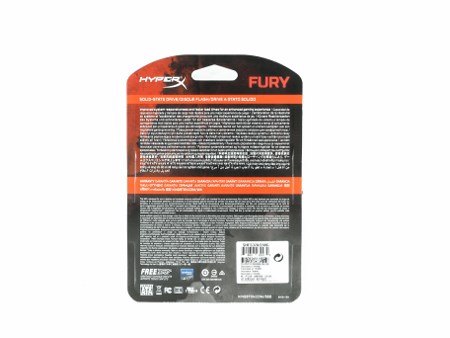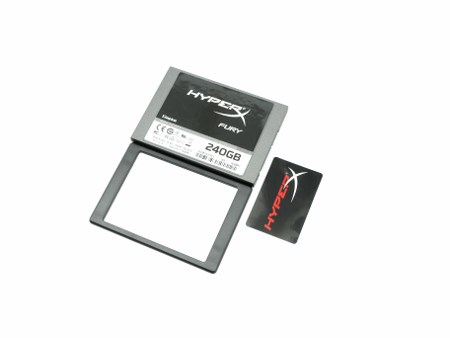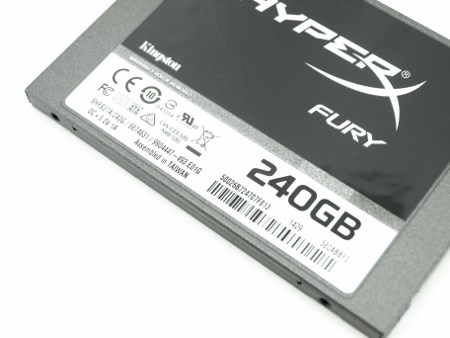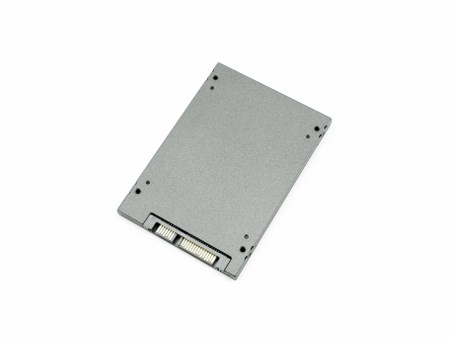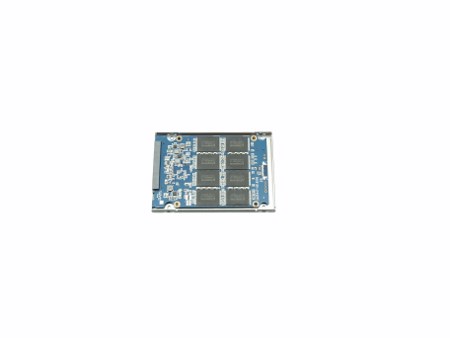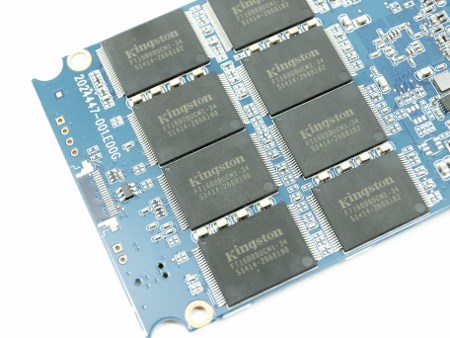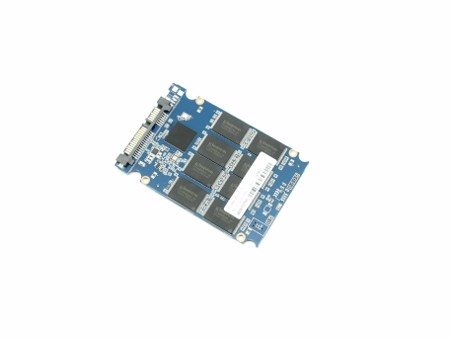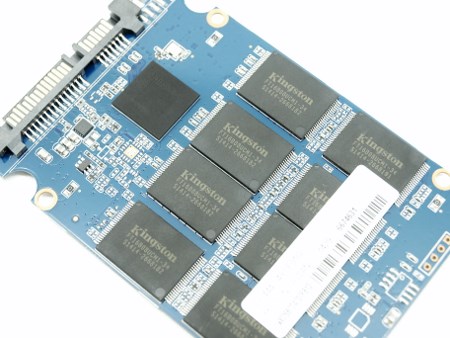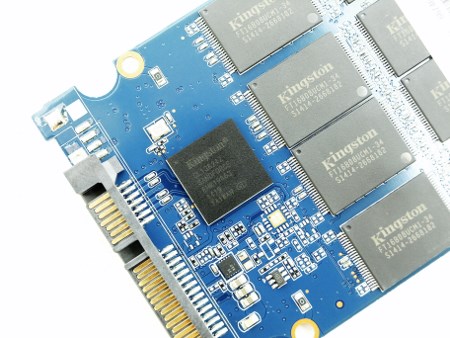INTRODUCTION
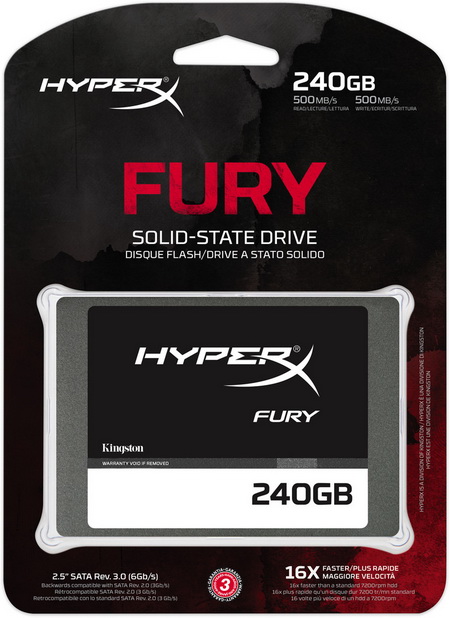
Although solid state drives have reached a very low price point one which should allow pretty much everyone to finally have at least one installed in their systems no one can deny that the difference in price per GB compared to regular mechanical drives is still quite large and that's obviously not something that will change anytime soon. So in order to further cut down costs manufacturers focus their resources in shrinking the NAND flash module manufacturing process and launching new low-cost NAND flash controllers (or just by using old ones) aimed towards people who care not about performance levels but are rather after the best possible price/capacity ratio. Today on our test bench we have one such attempt by Kingston and more specifically their brand new HyperX FURY 240GB SSD model.
Kingston Technology Company, Inc. is the world’s largest independent manufacturer of memory products. Kingston designs, manufactures and distributes memory products for desktops, laptops, servers, printers, and Flash memory products for PDAs, mobile phones, digital cameras, and MP3 players. Through its global network of subsidiaries and affiliates, Kingston has manufacturing facilities in California, Taiwan, China and sales representatives in the United States, Canada, Europe, Russia, Turkey, Ukraine, Australia, New Zealand, India, Taiwan, China, and Latin America.
For the brand new HyperX FURY 240GB SSD model Kingston has chosen to go with the somewhat outdated SF-2281 NAND flash controller by LSI/Sandforce (now Avago) that features well known technologies like NCQ (Native Command Queuing), RAISE (error correction, RAID like protection and recovery) DuraClass (advanced wear leveling and monitoring algorithms) and DuraWrite technology (up to 20x or more the flash endurance compared to other controllers) along with TRIM and intelligent garbage collection. Silicon Power did the same with their S60 SSD model and judging by the fact that Kingston took that path to reduce costs we now know why. Kingston also decided to use their very own MLC NAND flash modules for the FURY line of SSDs which according to them are not the fastest ones in their inventory (obvious choice to cut down the cost). Honestly i don't really know what to expect from the FURY 240GB SSD so let's find out together.
SPECIFICATIONS AND FEATURES

PACKAGING AND CONTENTS
This is the very first time we've received an SSD model inside a package normally used for USB flash drives (doesn't really matter since we only care about what's inside).
At the rear of the package we find a quick product description and the warranty information in several languages.
Just the basics are placed inside the package including the FURY 240GB SSD, 7mm to 9.5mm bracket and a HyperX sticker.
THE FURY 240GB
Unlike the previous HyperX SSD models the FURY looks a lot more like the latest V310.
The large sticker at the top has several certification icons, the model capacity, electrical requirements, serial number and the barcode.
Just like with the V310 the FURY model has the screws placed at the front right beneath the large sticker.
Opening the housing is very easy and as you can see on the bottom it has 8 MLC NAND flash modules each 16GB in size.
8 more MLC NAND flash modules are placed on the other side of the PCB along with the SandForce SF-2281 controller.
Kingston decided to print the SandForce name on the chip but not the controller model.
TEST BED
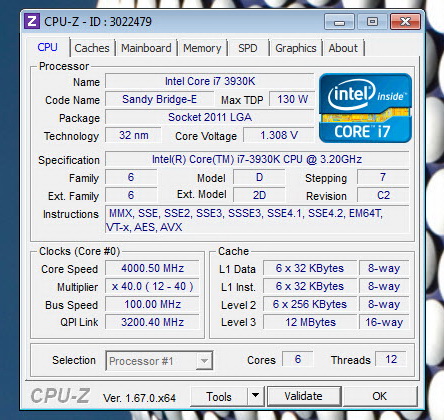

TESTING METHODOLOGY
After roughly 6 years of testing sold state drives i have concluded that it's almost impossible for any single benchmark suite to accurately measure their performance and that's why in certain benchmark suites we see amazing read/write performance numbers with some drives while in others things are quite different. The reason behind this is that some benchmarking suites are configured to read and write random chunks of data while others read and write constant (sequential) ones. So that's why i always use a very wide selection of benchmarking suites including AIDA64, HD Tach RW, HD Tune Pro, Crystal Disk Mark, Sisoftware Sandra Pro, AS SSD, IOmeter and ATTO. To get the most accurate results each test gets repeated a total of 6 times with the average performance numbers recorded into our charts.
Many people made inquiries about the charts ever since the last comparison so once again please do keep in mind that the Charts have the average performance numbers of each drive recorded and not the peak (highest) ones. Also although every single one of these programs can help potential buyers choose the right drive for their needs you should also remember that from any kind of benchmark up to real world usage the gap is not small (and usually most differences will go unnoticed by most people). All tests were performed in a fresh Windows 7 Ultimate x64 installation with every update installed up to August 16th 2014.
TEST RESULTS - AIDA64 / ATTO


TEST RESULTS - HD TUNE PRO / HD TACH RW


TEST RESULTS - SISOFTWARE SANDRA PRO / CRYSTAL DISK MARK
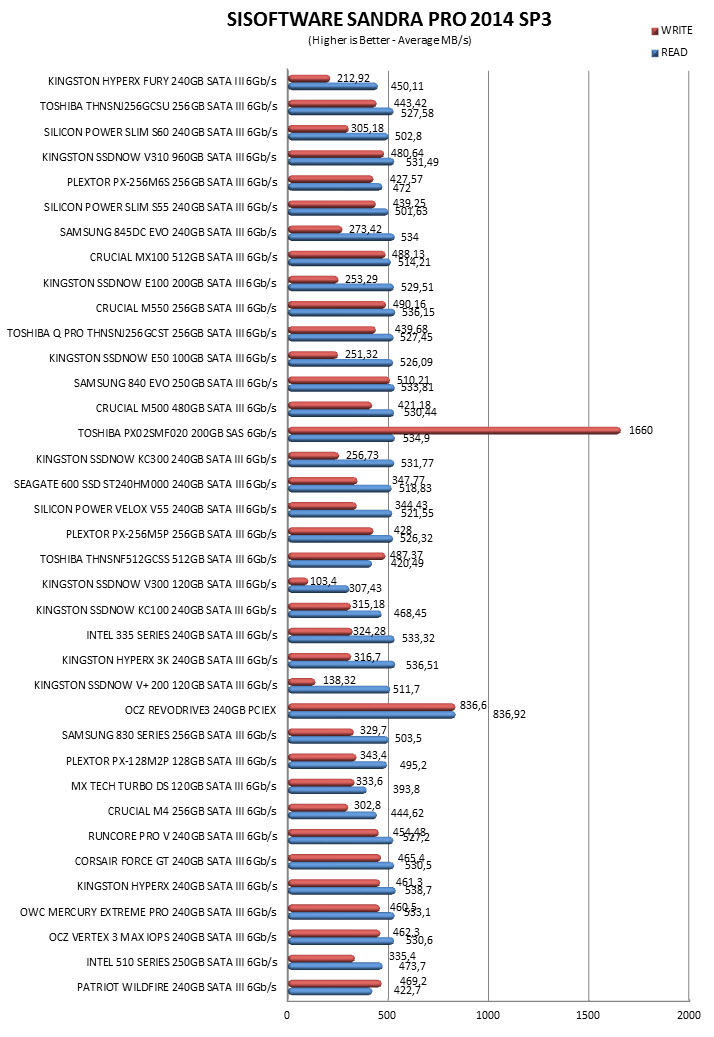

TEST RESULTS - AS SSD / IOMETER
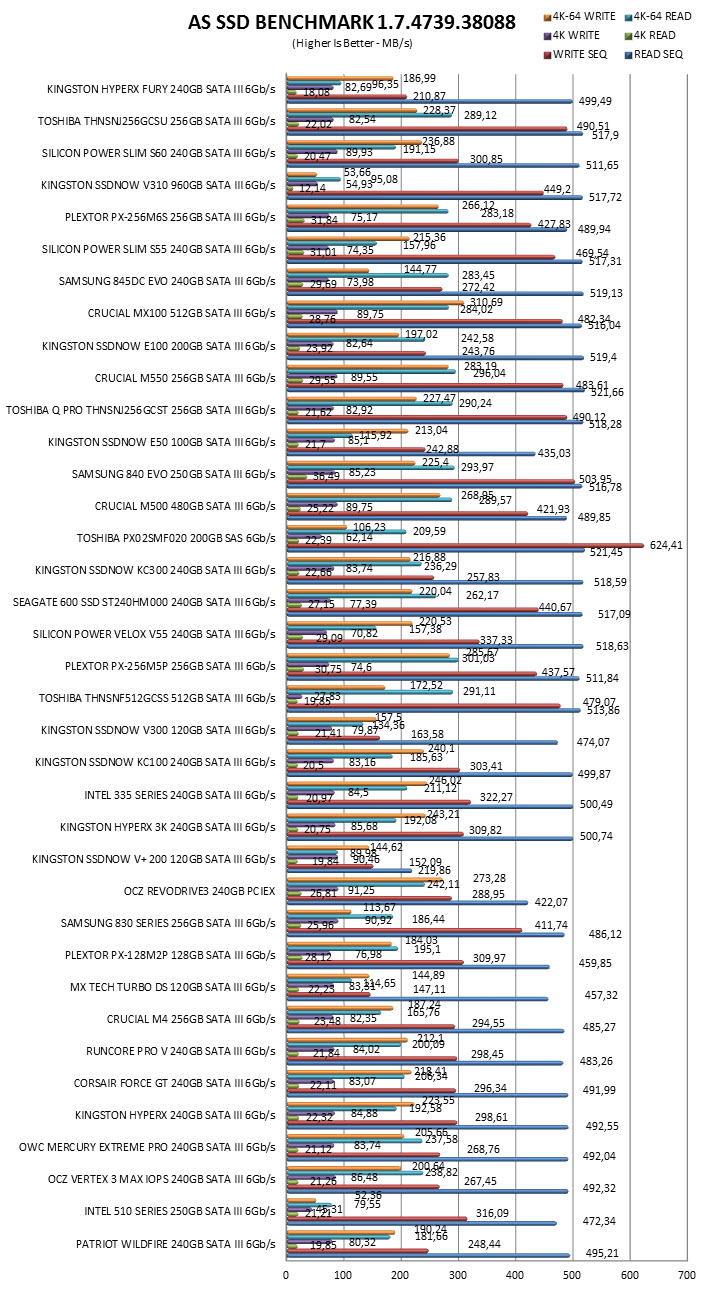
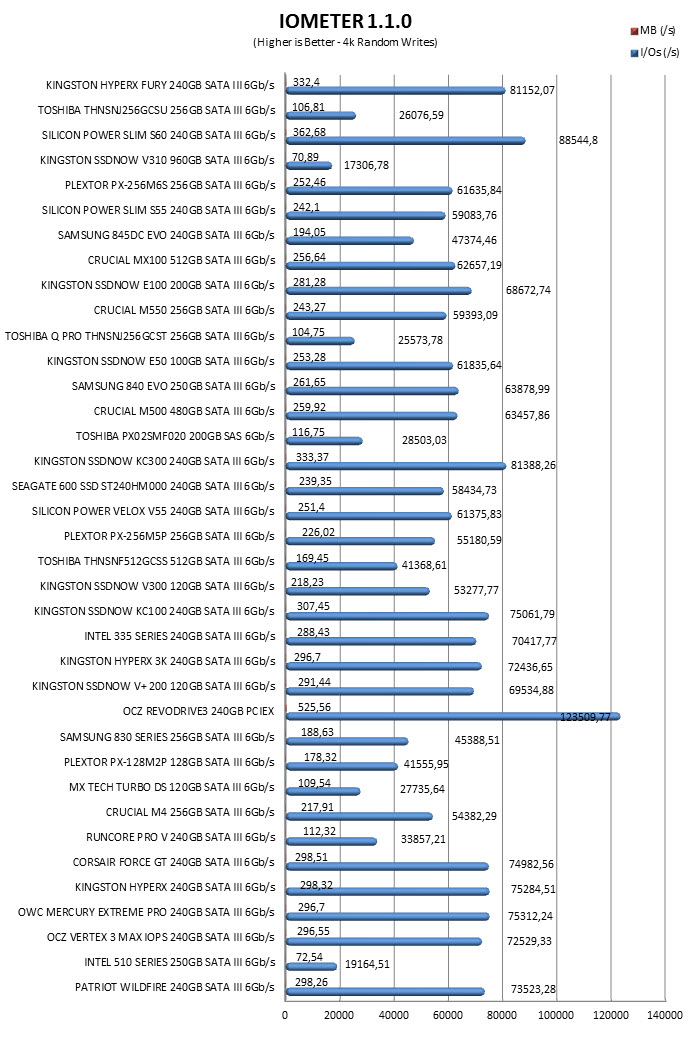
CONCLUSION
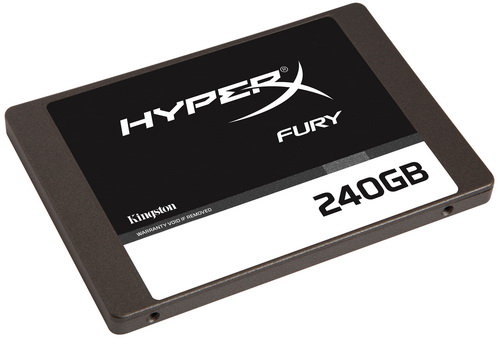
When we saw that Kingston decided to make use of the rather outdated but still good SandForce SF-2281 controller we were really hoping to see at least the same performance levels as we did with the Silicon Power Slim S60 SSD model but as you can clearly tell from our charts that didn't happen. The obvious reason of course for that somewhat large gap in performance is the MLC NAND flash modules Kingston used in the FURY SSD which are simply not on par with the ones found in the S60 (at least not as fast). Of course Kingston markets the FURY SSD model as their entry level solution aimed towards gamers who are not really looking for the best possible performance but rather something faster than normal mechanical drives so the real question is how much it costs and of course whether or not it's more competitive compared to the likes of the Slim S60.
Unfortunately things don't really look very good in the pricing area either since the HyperX FURY 240GB SSD by Kingston currently retails for USD114.99 inside the USA (Amazon.com) and for 115Euros inside the EU (Amazon.co.uk) a price tag that puts it right next to the clearly faster Slim S60 240GB SSD by Silicon Power. Now the good thing about Kingston however is that they are using their very own MLC NAND flash modules for the HyperX FURY SSD line so they could easily cut the price in order to make it more competitive but until (and if) that happens i really see no reason for USA consumers to prefer the HyperX FURY 240GB SSD over for example the Slim S60 240GB which offers the same capacity and is overall quite faster. Inside the EU however things are slightly different since the Slim S60 240GB is around 10% more expensive so if you happen to be looking for a new SSD and you're on a very tight budget then the HyperX FURY 240GB SSD could be exactly what you're looking for.
PROS
- Build Quality (SandForce Controller & Kingston NAND Flash)
- 3 Year Warranty
- Current Price (EU)
CONS
- SF-2281 Age
- Overall Performance
- Price (USA)

 O-Sense
O-Sense






